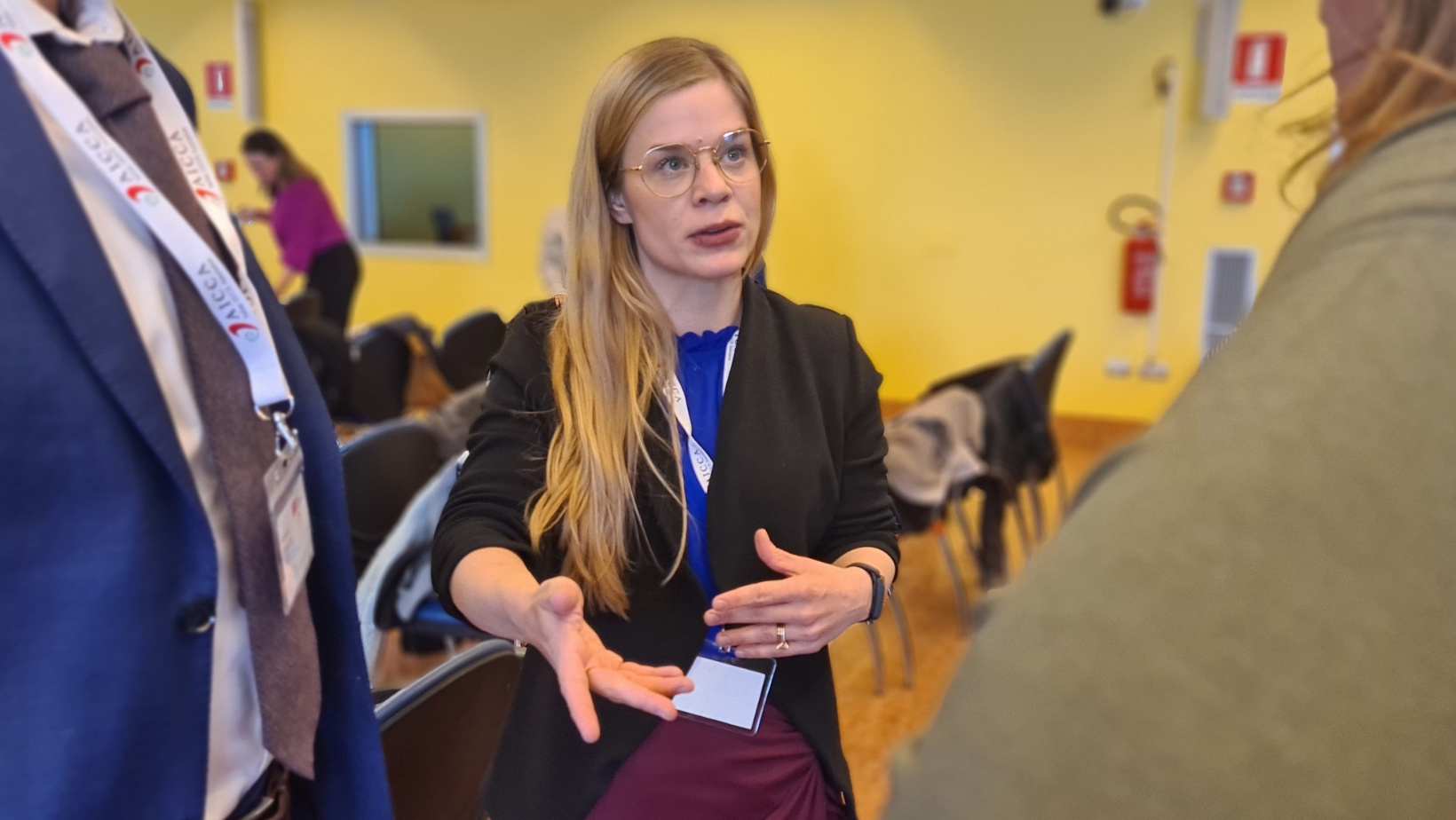Meg Didier on Mental Health: The Trauma of Single Ventricle Heart
As heart parents, we often wonder how early trauma will manifest as our children grow. Through insights from single ventricle survivor Meg Didier, we can learn how deep those experiences run—and how essential it is to look beyond survival to their long-term mental health.

Emanuela was almost seven months old when we brought her home for the first time. From the moment she was born, before I could even take a proper look at her, an emergency team whisked her away to a cardiac unit on standby. It wasn't until two days later that I was finally able to stroke her cheek, kiss her forehead, and hold her in my arms. The months that followed were a whirlwind of surgeries, complications, and life-saving procedures - a relentless roller-coaster between life and death.
Every morning for months, I woke up wondering if this would be the day we lost her. And yet, I clung to the hope that one day, we would take her home. Somewhere along the way, I became convinced - instinctively more than anything else - that she would be better off at home than in the hospital. I had heard from other mothers that their children thrived once they left the hospital, and even one of our cardiologists seemed to confirm it. So, I latched onto the belief: Babies fare better at home! I obsessively hoped the doctors would fix her enough to let us go, as if willing it would make it happen.
When we finally did get home, Emanuela thrived. But it wasn't without new challenges. I had to get to know her from scratch - she was seven months old, but to me, she was still my newborn. Life couldn't simply continue; it had to start over again, catching me off guard.
One morning, I put her on a playmat and turned on the vacuum cleaner. The loud noise sent Emanuela into a full-blown panic, screaming like never before. I knew all her hospital cries - the pain cry, the sad cry, the longing one, the wanting-to-be-cuddled one, the hunger cry - but this one was different. Eventually, she began screaming just at the sight of the vacuum. It seemed as though, deep down, the noise reminded her of the machines she was hooked up to in the hospital - the ventilators and the suction devices. All of it must have left its mark.

Like many moms of heart heroes, I wonder how much trauma will our children carry with them. Though they may not remember the surgeries, how will the trauma present itself later on? What about the triggers they can't articulate yet? I turned to someone who could shed light on this - an adult with a single ventricle heart, Meg Didier.
"I don't think I remember much about the surgeries themselves, but things like the beeping alarms or sleep disturbances from that time might have stuck with me. Even today, alarms can still have an impact. I wonder about the light, the stimulation, and how that has impacted me. But from the memories of actually being in the hospital, I don't have that many until I was probably around 10, 11, or 12. That's when things started kicking in a little bit more for me. But, I think I'm unique in the sense that I wasn't three or four during the Fontan."
Meg was 13 months old when she had her third open-heart surgery - Fontan. Her first surgery took place at just 11 days old, and her second at six months. Though she doesn't recall these early surgeries, she does recall a detail from the one she had at the age of two and a half.
"The only snippet that I remember is being strapped down with my mom in the back of an ambulance and feeling okay because my mom was with me. I remember looking up and her telling me 'You're fine. You're okay.' while the sirens were on, serving as a distraction. Thinking about that now, as a mom myself, it's emotional. I can't even imagine the fear my parents must have felt."

I first met Meg earlier this year at an international conference on congenital heart defect topics in Milan, Italy. She is a true pioneer, showing us what life with a single ventricle heart can be, and preparing us for what our much younger children might not yet be able to express. Her insights about triggers, like alarms and sounds, struck a chord with me.
"My husband is an ICU nurse, and when he does his continuing education at home, listening to emergency or a code simulation makes me nauseous. I have to put headphones on. Also, when I was younger, after my Fontan, there were teams of doctors that I knew because I had issues with pleural effusions*, and I had to have them drained almost every single day. So, it happened that the team came in to do that, but as soon as I saw them walking, I would just start screaming."
Her story made me reflect on Emanuela's triggers - like the vacuum and later the sound of duct tape. I once thought it would be fun to play a toddler game with sticky balls, where the tape is glued between two walls or furniture, and the child puts little colorful balls on it and peels them off while stretching, climbing, and getting on their toes. It would have been such a great physiotherapy kind of exercise, I thought. But the moment I peeled the tape, Emanuela fell apart.

It wasn't until years later, when I saw a sanitation worker peel the sticky pad from the ICU floor, that I made the connection.
"You associate the sound, or the people, with what's going on. But, at the same time, it's strange because one of the most comforting places I could be is a hospital room... All of a sudden, the hospital becomes a place where we want to go. There is no stress, no responsibilities. If something happened to your heart, you have everything around you. It's about a sense of security. Many adults feel that way too."
Meg's reflection highlights the conflicting feelings tied to the hospital experience. I have them too. And while Emanuela no longer fears vacuums or duct tape, I still wonder where she stores those early traumas. What will open those deep brain drawers, as I like to think of them, and how will they resurface later in life?

Deeply intrigued by the brain, Meg changed her major from biomedical research and her work in a genetics lab to pursue a degree in neuroscience. She suffered multiple strokes and temporarily lost the ability to speak. She remembers how it felt being trapped in her mind, unable to connect her thoughts to her speech and just - communicate. It was a very terrifying and life-changing experience, she says. So, it was only natural that she wanted to understand what happened to her and how the brain works.
"I became fascinated with it, and the way the brain protects and heals itself. There are critical developmental stages, like those first three years, that coincide with our major surgeries. It's astonishing to think about how these early experiences shape us. No one thought about neurodevelopment where we were going through it because no one imagined we'd live into adulthood."

For many families, mine included, this rings true. Emanuela faced feeding complications, developmental delays, and ongoing neurological and other follow-ups, and while it was all part of her medical file, the focus was - survival. But now, as more Fontan warriors grow into adulthood, the conversation must shift to include mental health. It's not enough to survive; we need to ensure our children have lives worth living.
"Mental health was never part of my care growing up. It was always, 'Your heart looks great, your tests look great, that means you're great.' And then I would go home. Truthfully, even my family didn't understand what that could mean and how that could impact my mental health. As long as my heart was okay, I was good. But it's not that simple. Earlier intervention from the cardiologist and the care team, introducing a psychologist into the multidisciplinary approach, is the right thing to do. When it comes to medical PTSD and medical trauma, a lot of times we try to bury everything down so deeply because we're focusing on literal life-and-death situations, and that impacts us and builds over time. If a psychologist had been part of my care team, I probably wouldn't have been sitting here freshly six months into ADHD treatment for the first time in my life. And that took me over ten years, with knowing how to navigate healthcare, who to talk to, and being able to find some of the best people to help me. This isn't easy for anyone right now. So, making it more accessible and being proactive is the only way that we're going to be able to address it."
Recent studies** highlight the psychological impact on congenital heart defect (CHD) patients. Children and adults with CHD have a lower quality of life than their healthy peers, with anxiety, PTSD, ADHD, anger, and depression being prevalent.
11-21% of adults with CHD are diagnosed with PTSD, compared to 3.5% in the general population.
(Healing Heart and Minds, A Holistic Approach to Coping Well With Congenital Heart Disease, by Tracy Livecchi, LCSW and Liza Morton, PhD, p. 51)
Around one-third of adult CHD patients meet diagnostic criteria for mood or anxiety disorders, with Fontan patients among the most affected groups.
• 31% - mood disorder
• 28% - anxiety disorder
• 42% - elevated anxiety symptoms
• 12% - elevated depressive symptoms
(McGrath, L., Eldridge, A., Khan, A., Broberg, C. (2023). Fontan Patients: Psychological Support in Adult Life. In: Clift, P., Dimopoulos, K., Angelini, A. (eds) Univentricular Congenital Heart Defects and the Fontan Circulation. Springer, Cham.)
Manifestations of anxiety and depression often begin as early as childhood.
Fontan patients are five times more likely to have anxiety, separation anxiety, or social phobia/avoidant behaviour than their healthy peers, and ADHD is also five times more common in Fontan teens as compared to their healthy peers.
Meg’s story serves as a reminder that, as medical advancements prolong the lives of our children, the focus must extend beyond survival. Psychological health and quality of life must be integral parts of their care.

*Pleural effusion is a collection of fluid around the lungs. (Cleveland Clinic)
**The studies referenced in this text are drawn from the Practical Manual for Patient Management: Univentricular Congenital Heart Defects and the Fontan Circulation